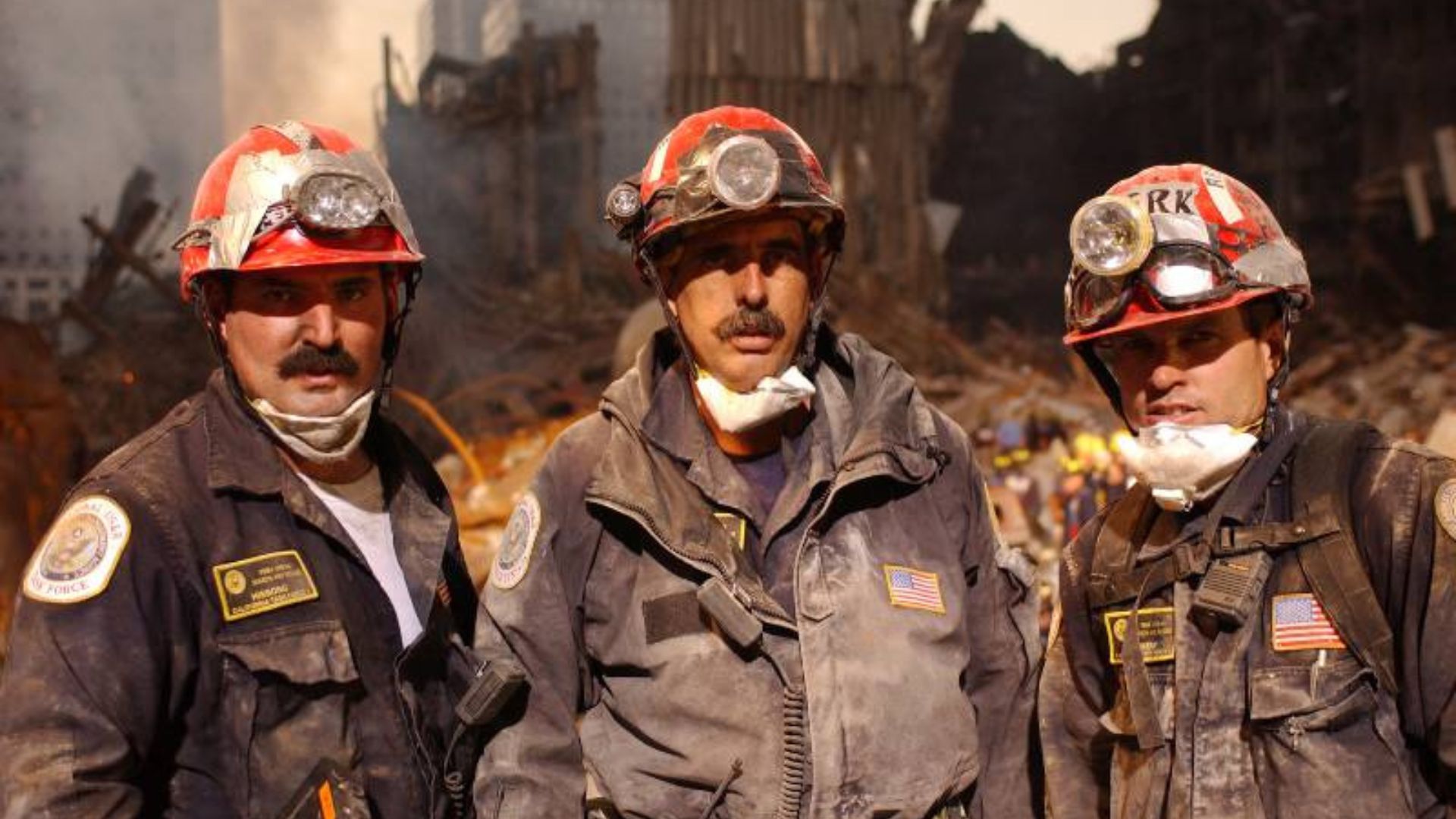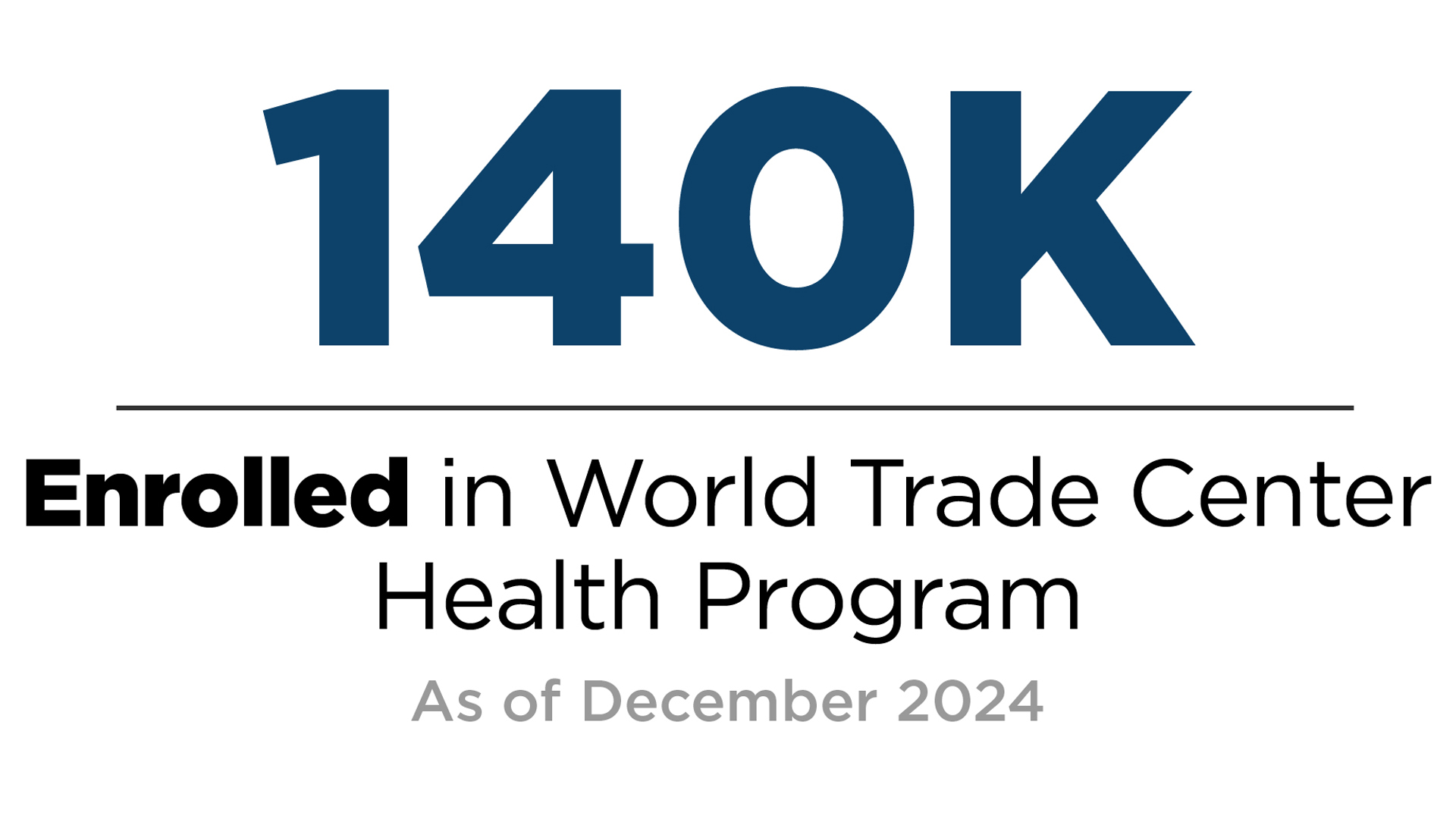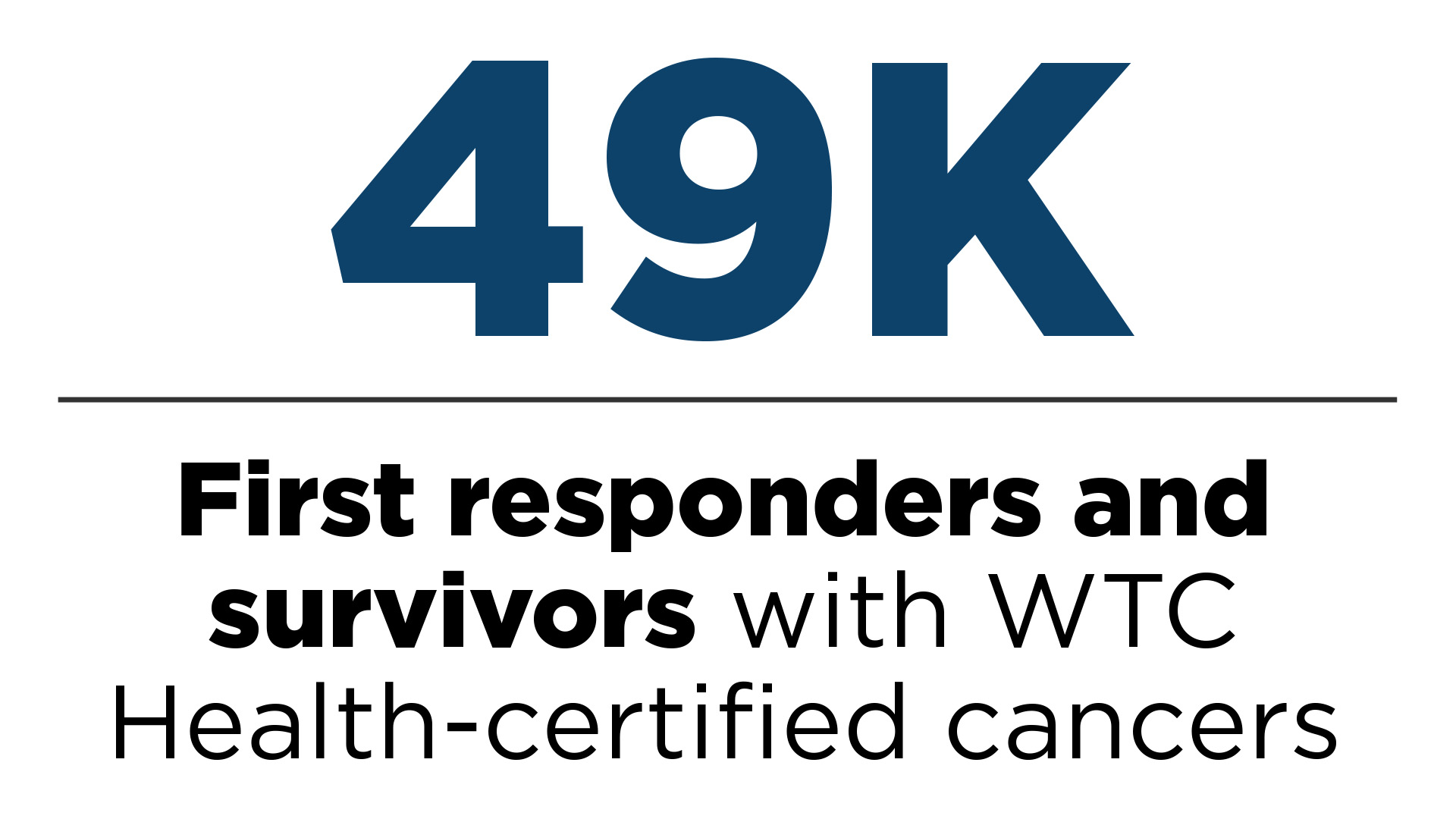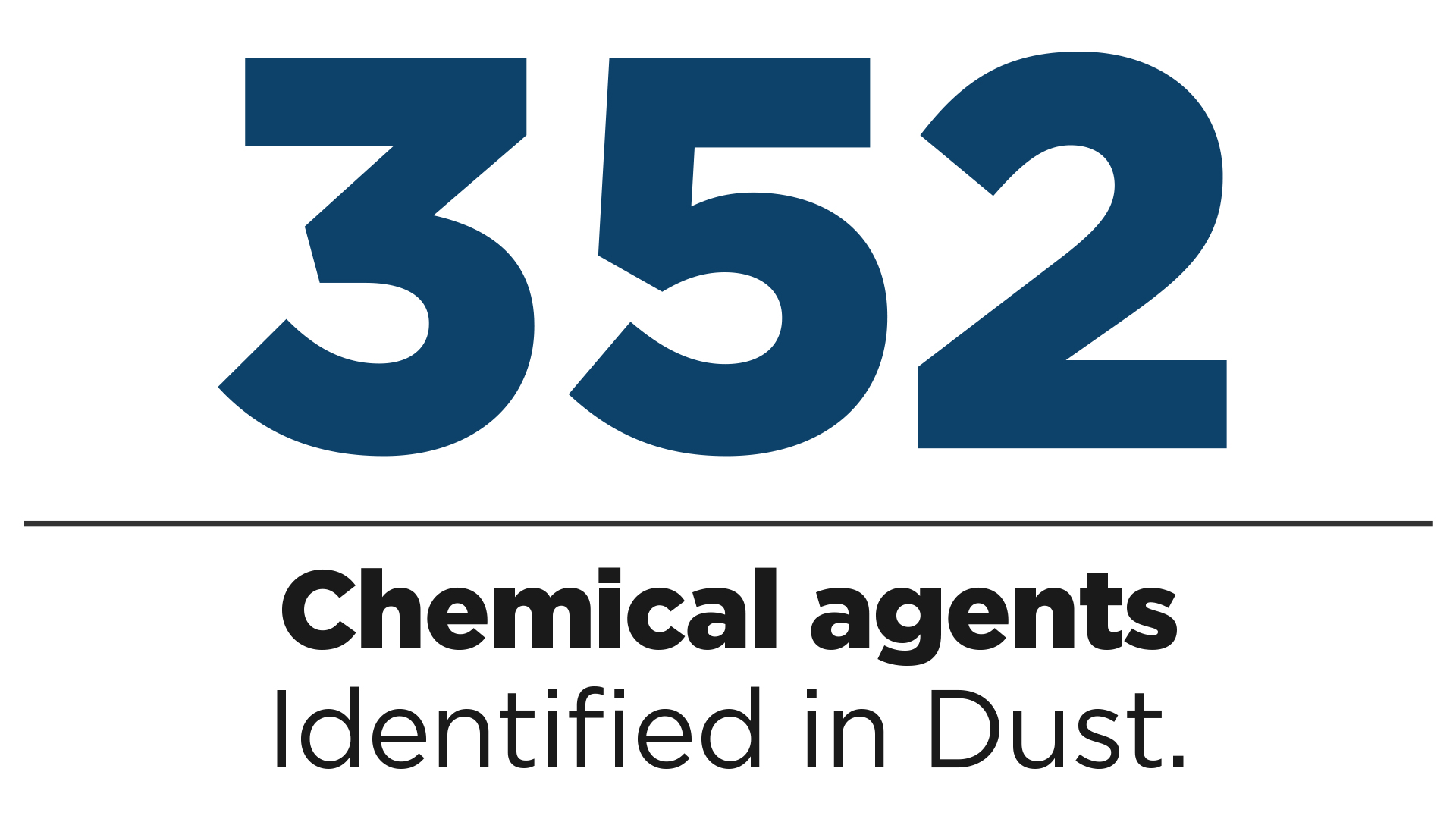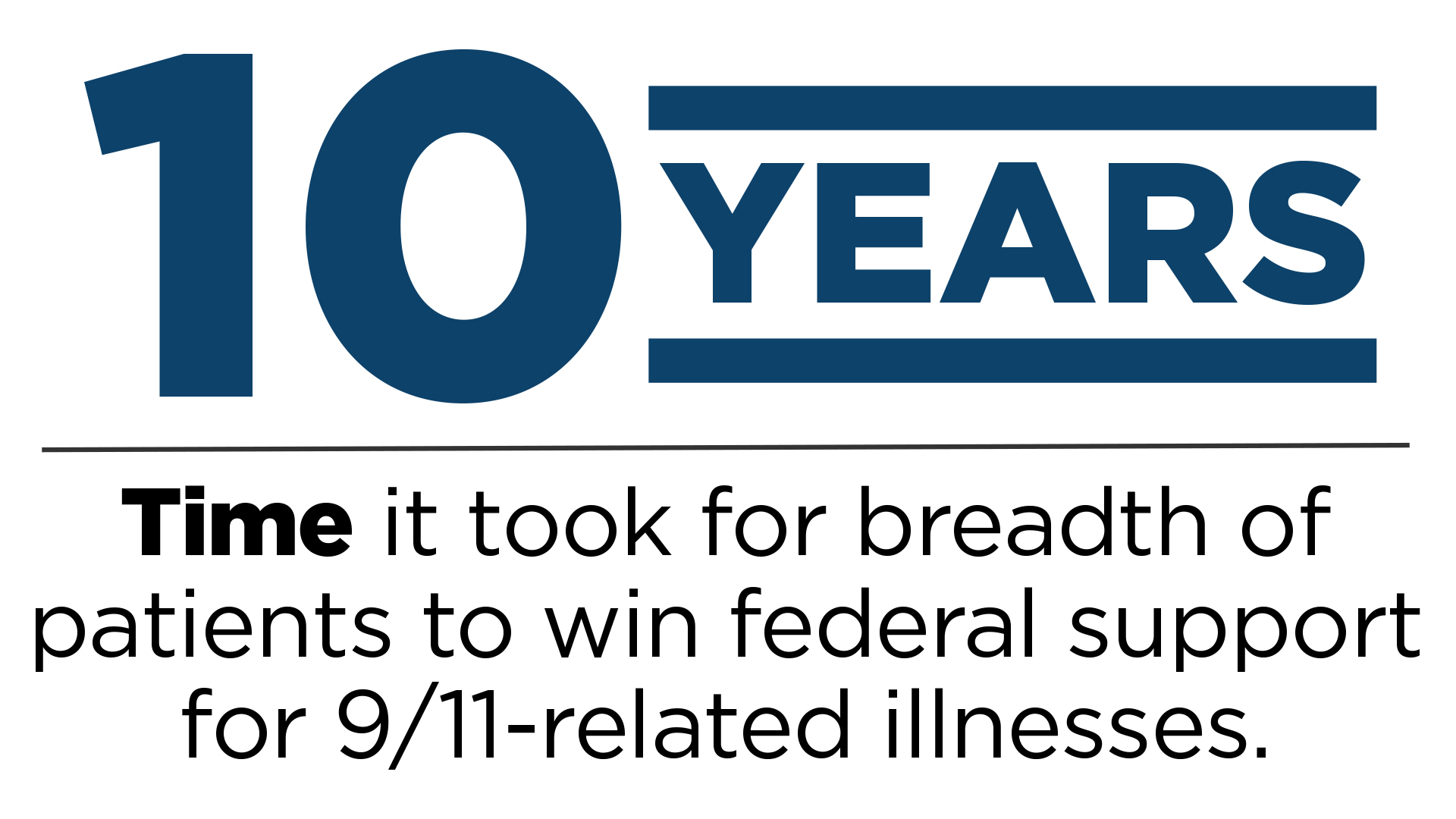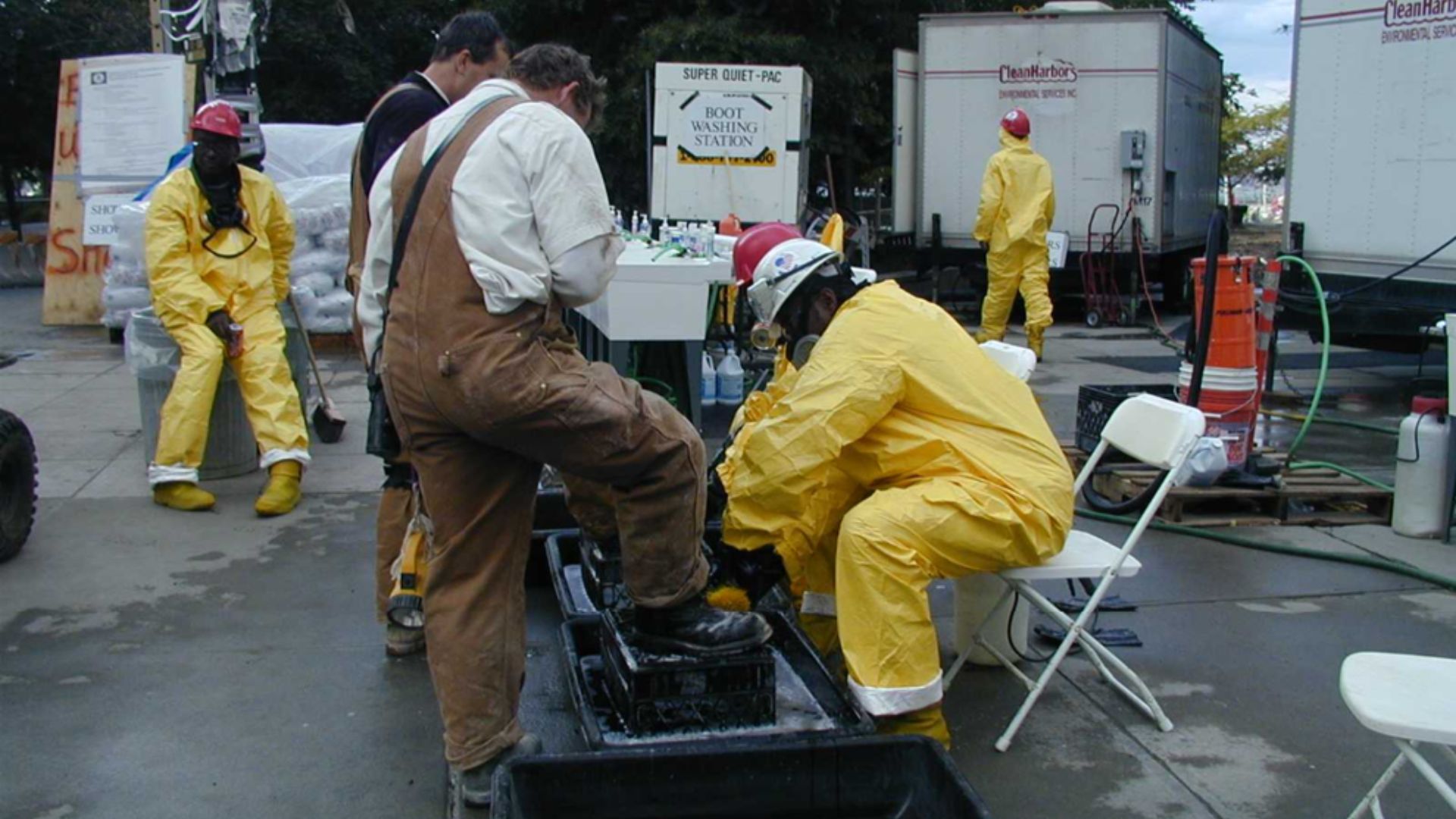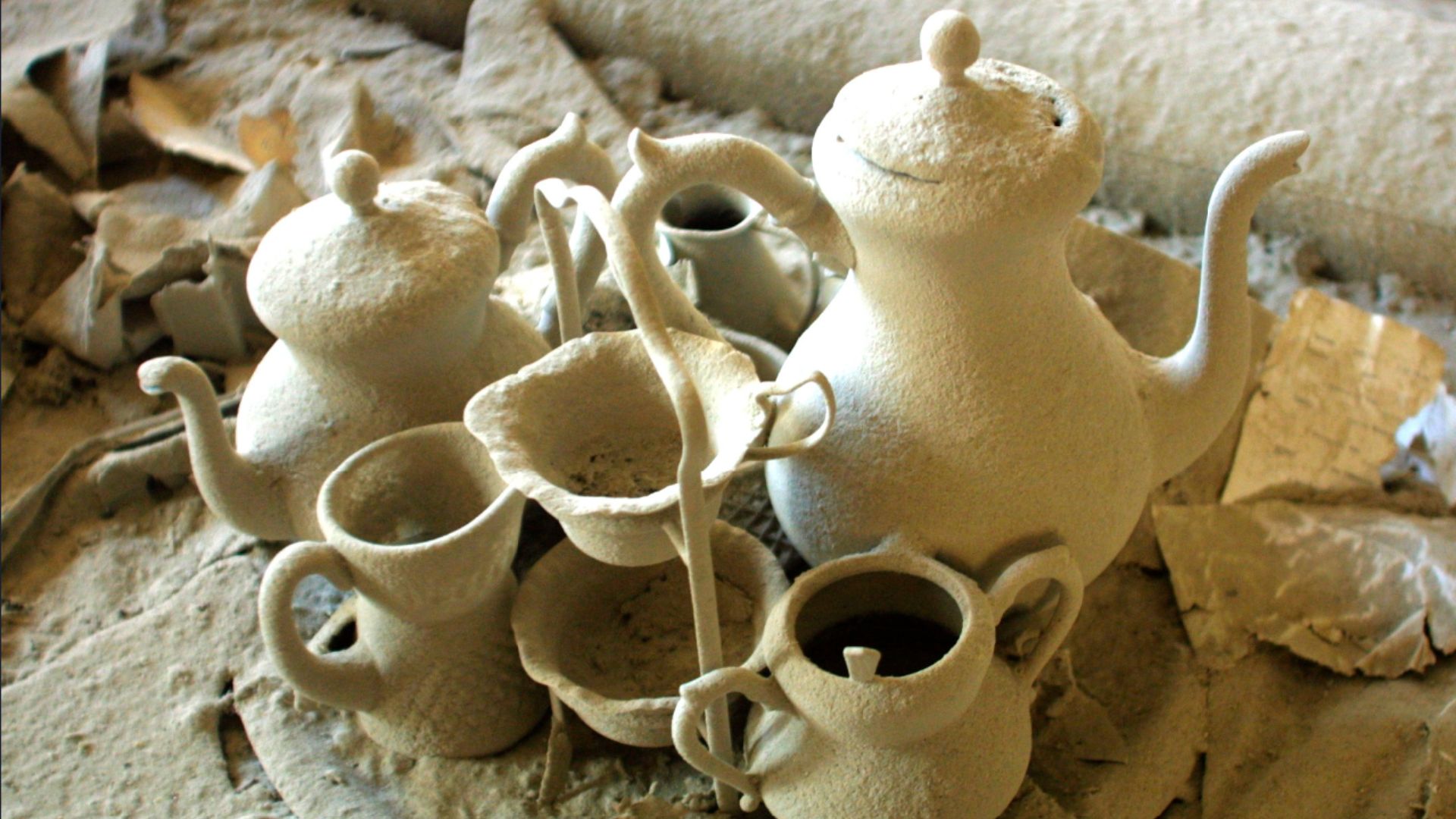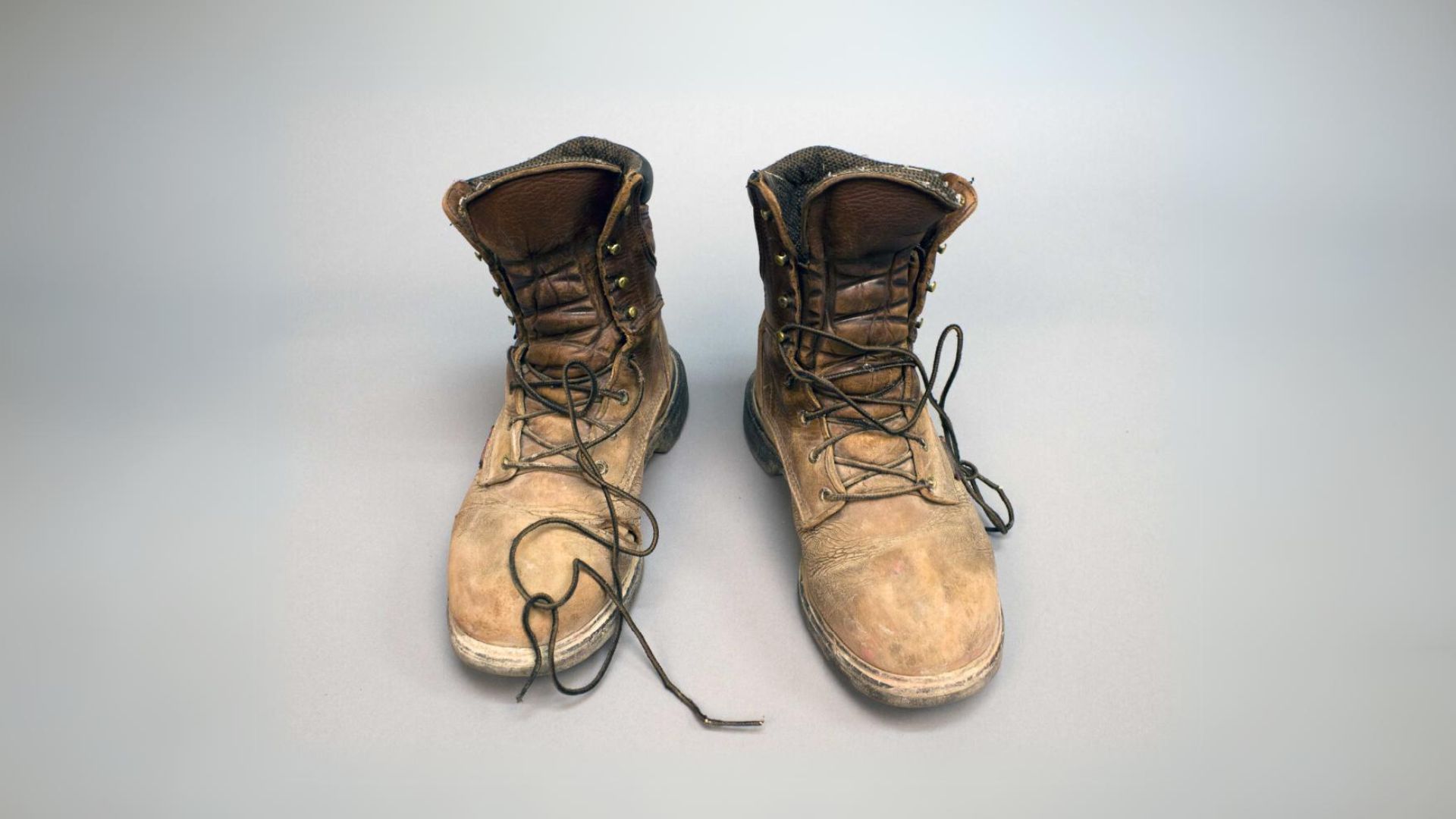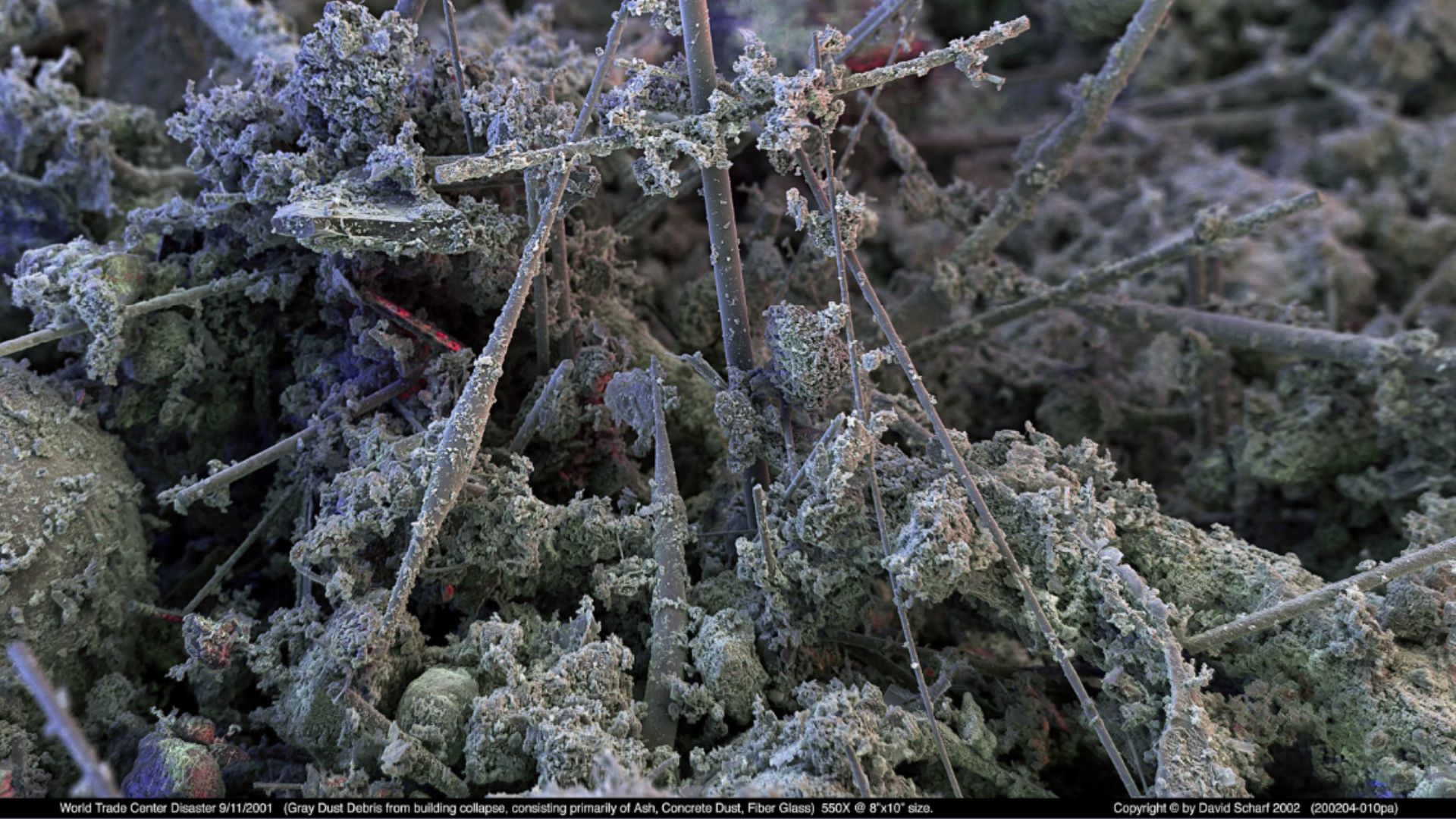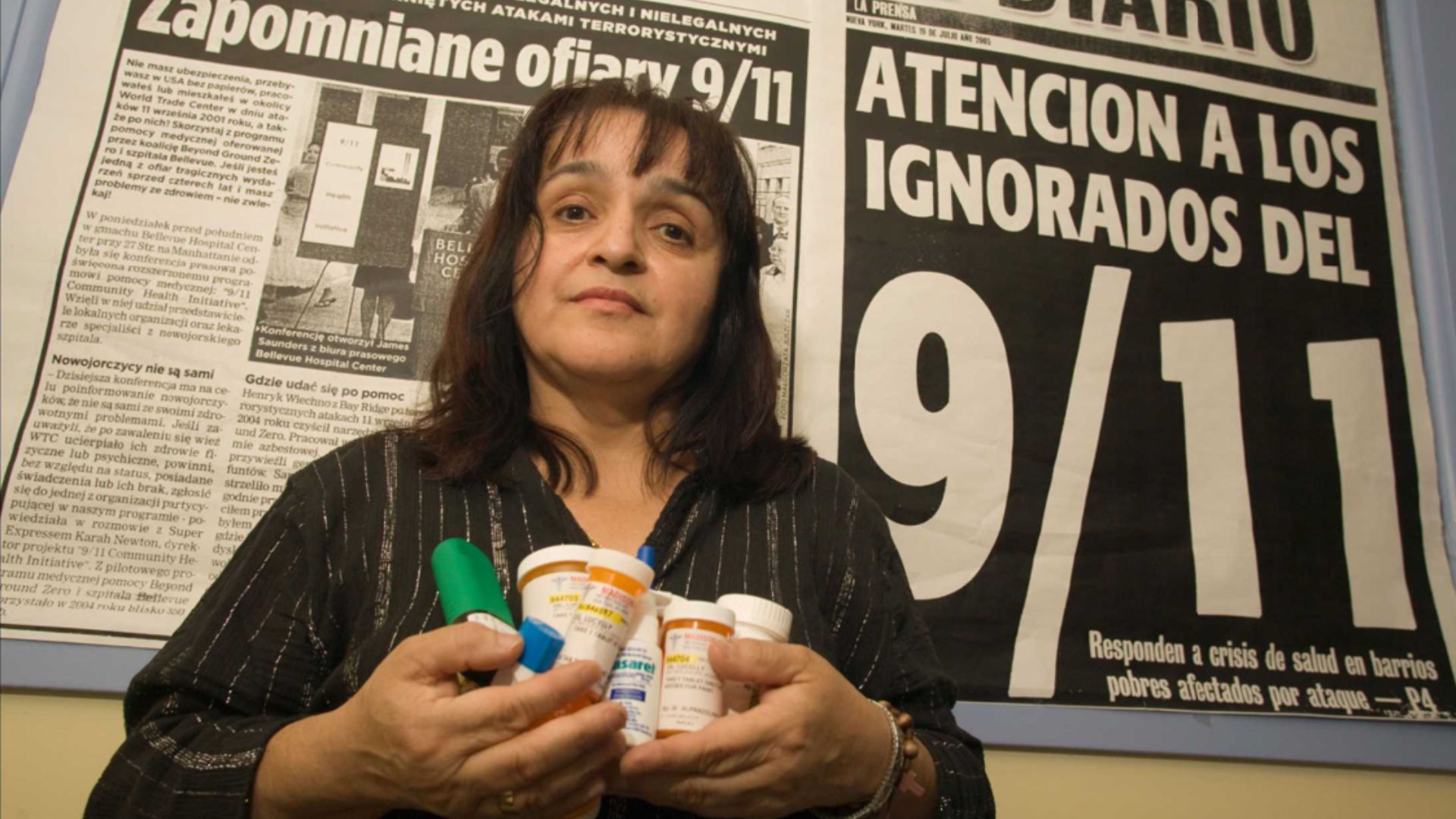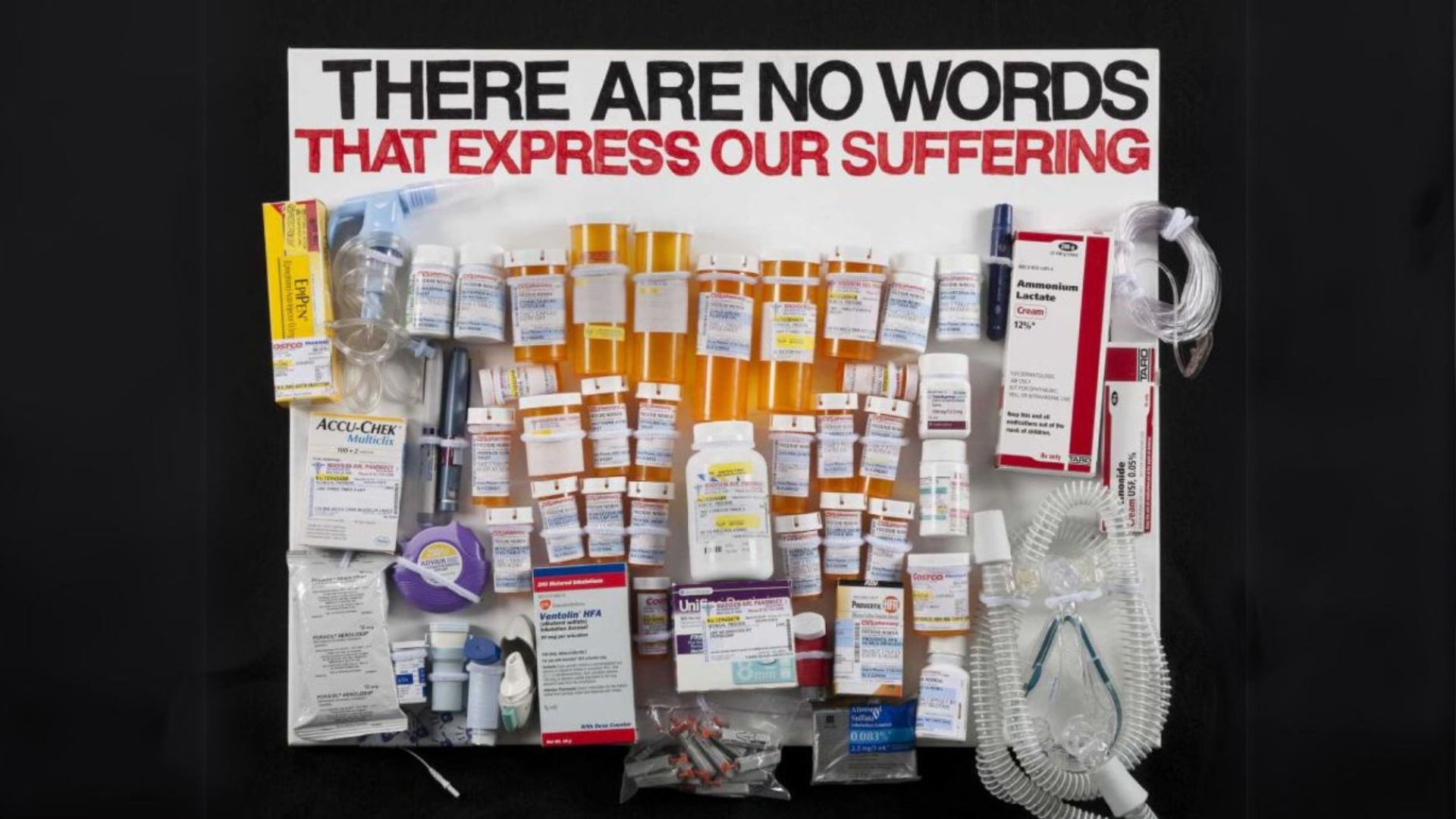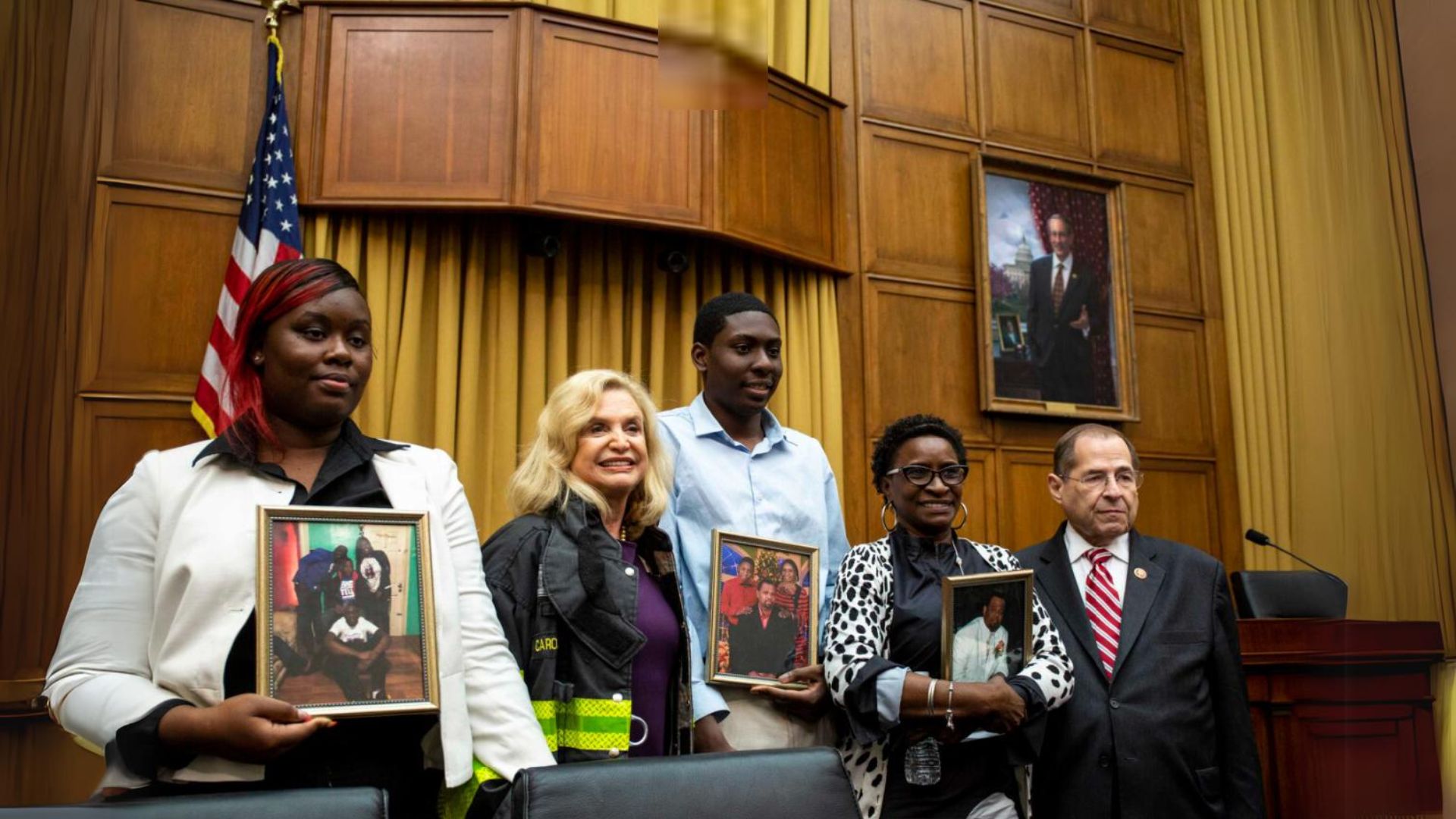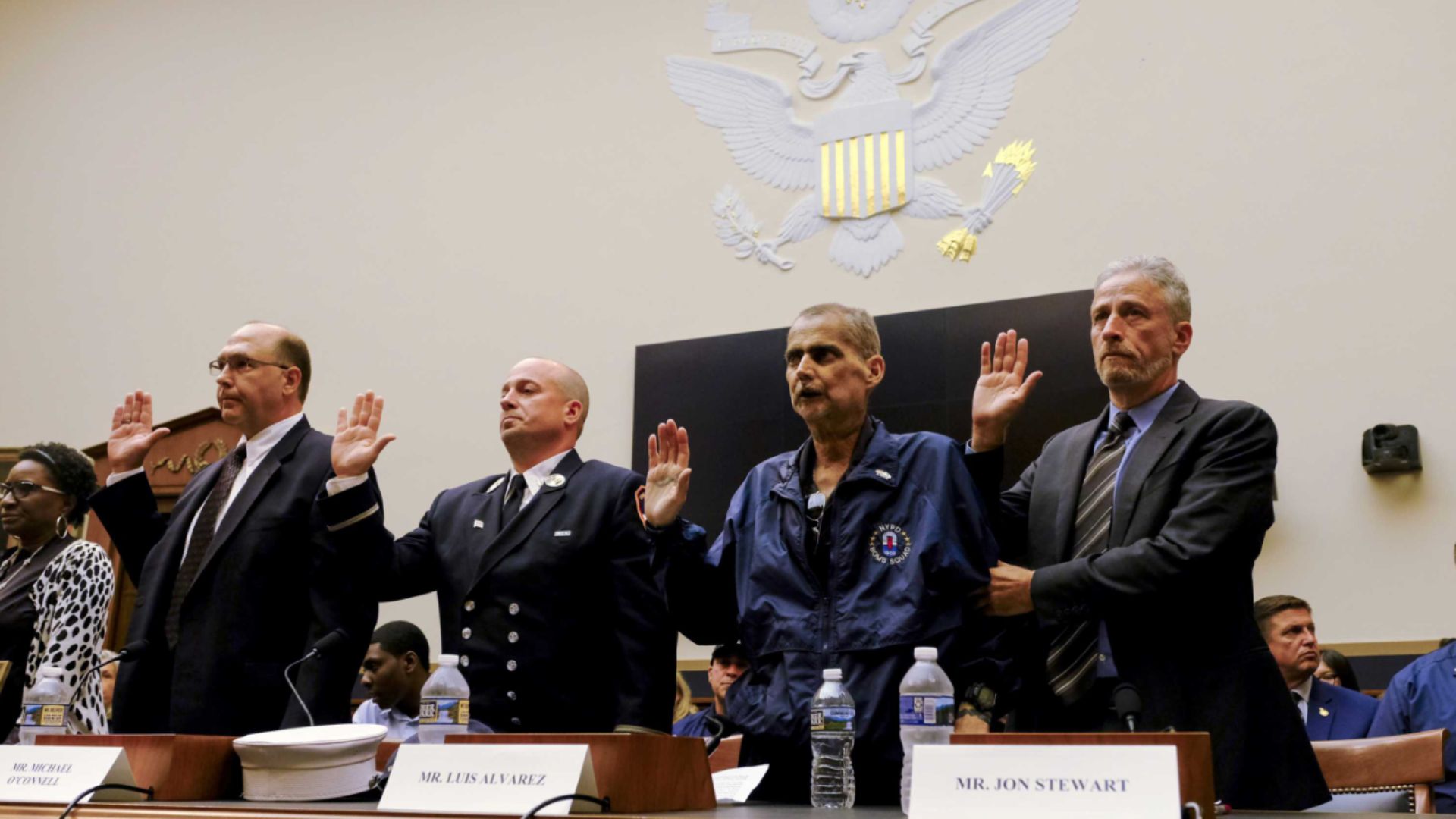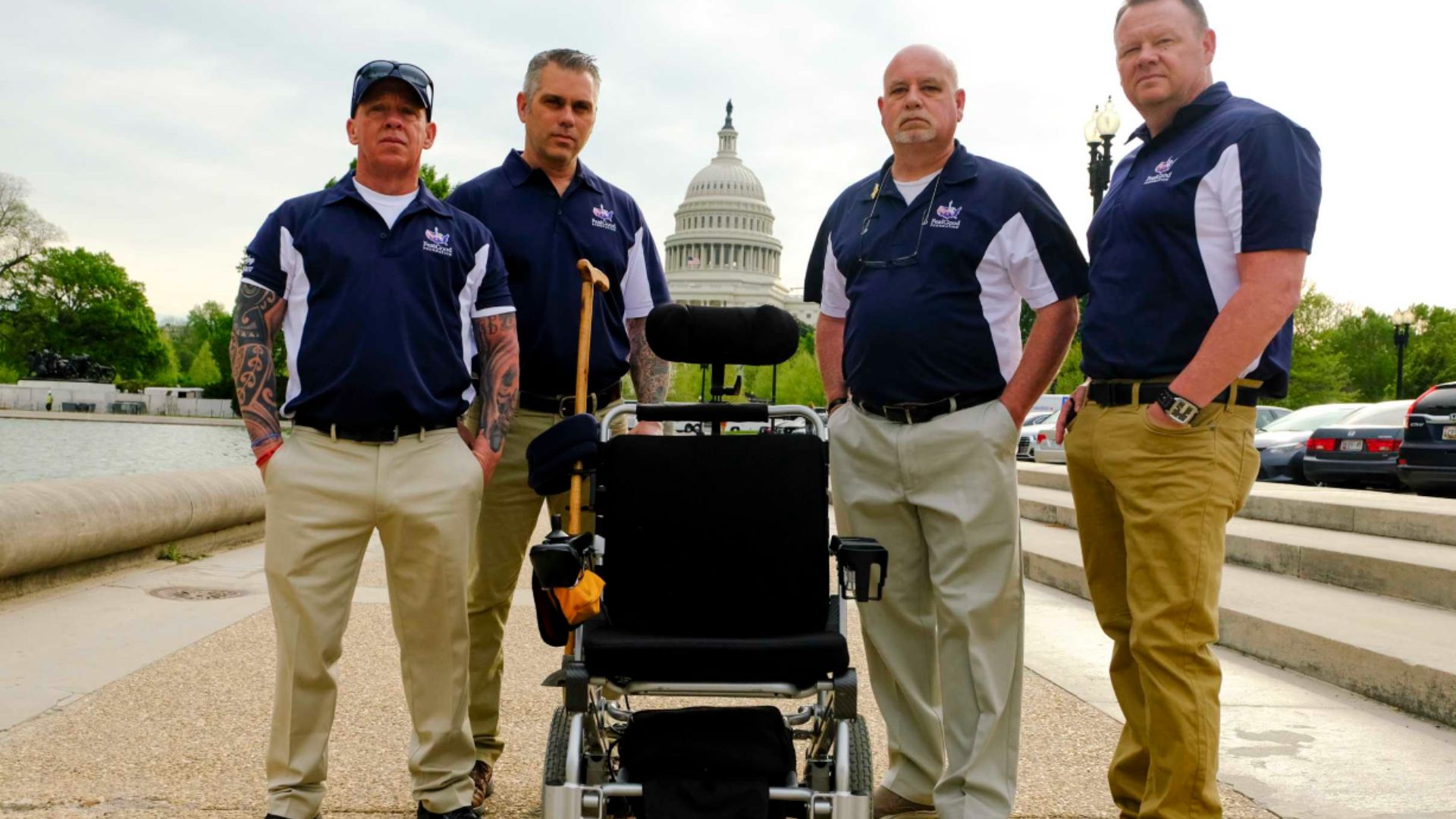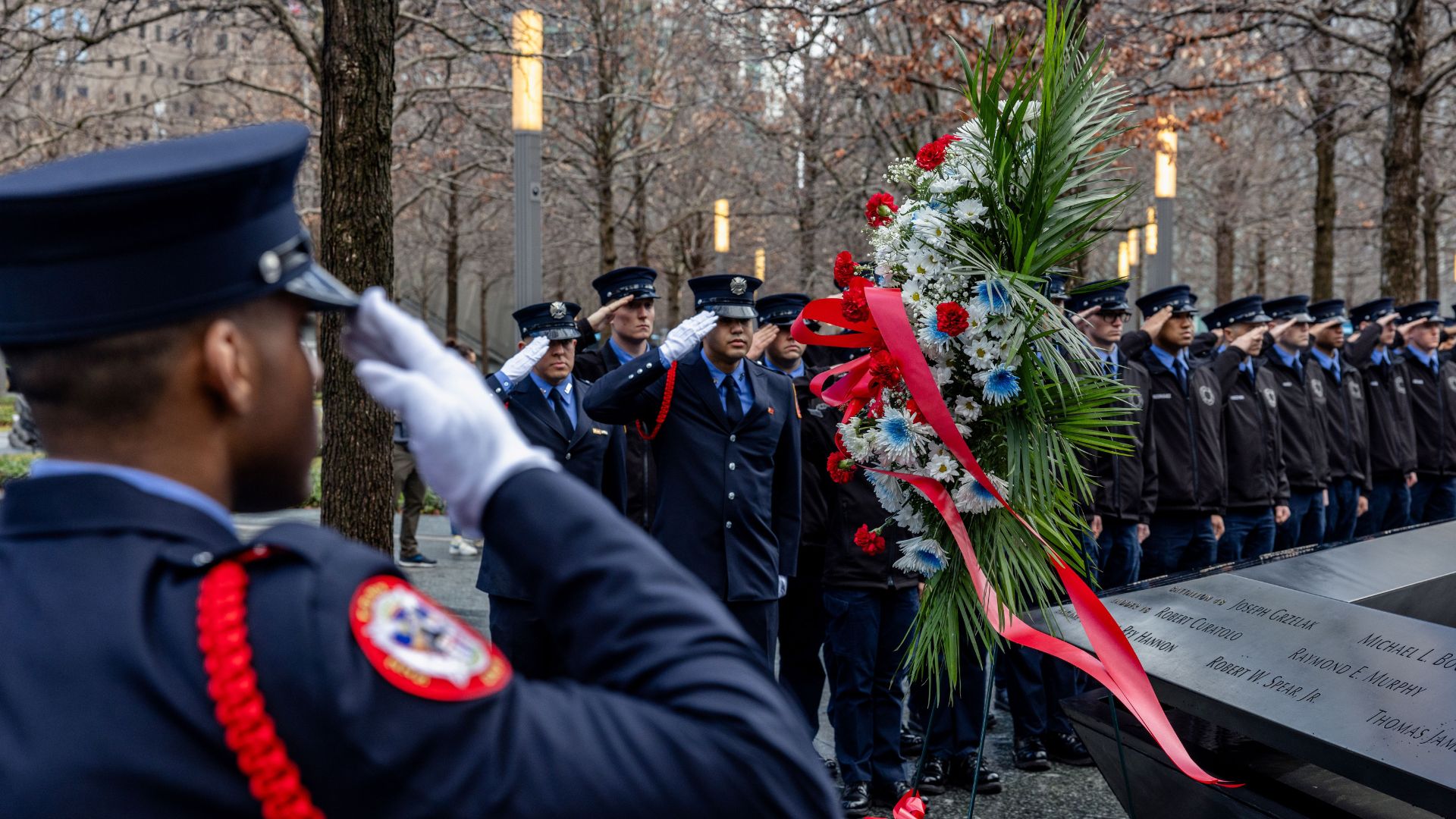Make a donation to the museum
Illness and Advocacy After 9/11
Nearly a quarter century after 9/11, its ongoing physical and mental health impact still deeply affects tens of thousands of individuals across the country who were in lower Manhattan and the surrounding area following the attacks, as well as those from around the world who participated in the rescue, recovery, and relief efforts.
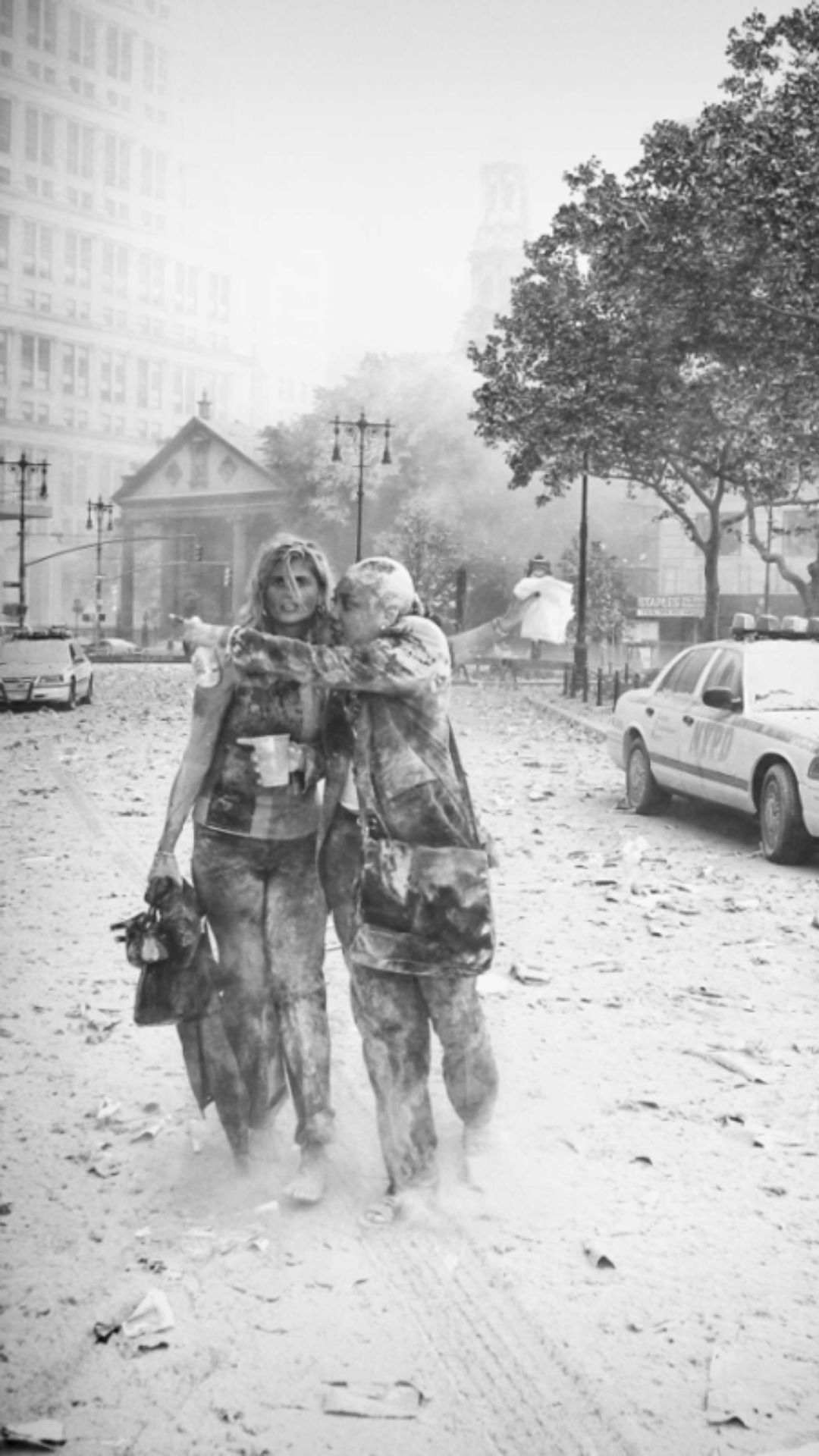
Joanne Capestro (left) with a colleague at Broadway and Park Row after the collapse of the South Tower.
"Dust: Illness and Advocacy After 9/11" is a new installation exploring the impacts of the toxic dust that blanketed city streets and coated the insides of homes, businesses, and schools in the area. Every breath that survivors, first responders, and lower Manhattan residents took put them at risk for toxic exposure, underpinning the larger public health impact of the day that changed our world forever.
Central to the 9/11 narrative at the core of our mission is what happened after the towers fell: the bravery and selflessness we saw; the diversity and sheer number of people who have died from or are currently living with illness and trauma because of that; and the advocacy efforts to secure congressional funding for immediate and long-term medical monitoring, research, and treatment programs.
As lived memory turns to history, the Memorial & Museum continues to expand the breadth of its storytelling and create new opportunities to recognize the sacrifice of all survivors, health care advocates, and later victims of the 9/11 catastrophe.

Courtesy Centers for Disease Control, World Trade Center Health Program
WTC Health Program
The World Trade Center (WTC) Health Program is a limited federal health program administered by the National Institute for Occupational Safety and Health, part of the Centers for Disease Control and Prevention in the U.S. Department of Health and Human Services and is authorized through 2090. The Program provides no-cost medical monitoring and treatment for certified WTC-related health conditions to those directly affected by the 9/11 attacks in New York, the Pentagon, and in Shanksville, Pennsylvania.
The WTC Health Program was established by the James Zadroga 9/11 Health and Compensation Act of 2010. In 2015, the Program was reauthorized until 2090. Tens of thousands are sick and, according to officials, over 8,000 people enrolled in the program have died (from all causes, not only World Trade Center-related conditions). But as of June 2025, the program was providing assistance and support to roughly 136,000 members across all 50 states.
Young Adult Outreach
As part of its efforts to raise awareness about the availability of program benefits to those who were 21 or under in the aftermath of the attacks, the WTC Health Program offers videos featuring firsthand accounts from young survivors who are now facing related conditions like asthma, cancer, and PTSD. Watch these videos.
Additionally, "The Health Effects of 9/11: An Online Exhibition" was developed by the WTC Health Program in partnership with the David J. Sencer CDC Museum. The exhibition examines the ongoing health effects linked to 9/11 exposures and the emergence of WTC-related health conditions. It also explores the events and advocacy that established the WTC Health Program and research achievements that have led to improvements in medical treatment and knowledge. Explore this online exhibition.
Learn more about the WTC Health Program, including how to apply and what they cover. Additional resources can be found below.
Row 1: (Left) Boot washing station near Ground Zero, Collection 9/11 Memorial & Museum, Photograph © Steve Spak. (Right) Photograph by Edward Keating, The New York Times, Redux.
Row 2: (Left) Pair of Red Wings Gore-Text boots, with leather visibly dry and cracked. A layer of dust and dirt is also present. Collection 9/11 Memorial & Museum, Gift of devotion from the Lyons family. (Right) Dust at Ground Zero as seen in a scanning electron microscope. Collection 9/11 Memorial & Museum, © by David Scharf 2002
Row 3: (Left) Lucelly Gil, a cleaning woman who worked at buildings near Ground Zero, poses with an array of the medications she takes to treat various 9/11-related health issues. Collection 9/11 Memorial & Museum, © Allan Tannenbaum. All rights reserved. (Right) Protest sign with empty pill bottles. Collection 9/11 Memorial & Museum, Gift of Freddie Noboa, Photograph by Matt Flynn.
Row 4: (Left) Family of Candidus Henry, a deceased construction worker, with Rep. Carolyn B. Maloney (D-NY) and Chairman, Rep. Jerrold Nadler (D-NY) following the hearing on H.R. 1237: "The Need to Reauthorize the September 11th Victim Compensation Fund." Collection 9/11 Memorial & Museum, Gift of FealGood Foundation and Faye Murman-Dorsey. (Right) Tom Mohnal (FBI), Michael O'Connell (FDNY), Luis Alvarez (NYPD), and Jon Stewart are sworn in before testifying as part of the second witness panel at the same hearing. Collection 9/11 Memorial & Museum, Gift of FealGood Foundation and Faye Murman-Dorsey.
Row 5: (Left) Members of the FealGood Foundation, including, from left, John Feal, Keith Delmar (FDNY), Richard Palmer (DOC), and Kenny Specht (FDNY) in Washington, D.C. Collection 9/11 Memorial & Museum, Gift of FealGood Foundation and Faye Murman-Dorsey. (Right) FDNY EMT class gathers on the Memorial plaza. 9/11 Memorial & Museum, Photograph by Jin S. Lee.
Our Anniversary Digital Learning Experience
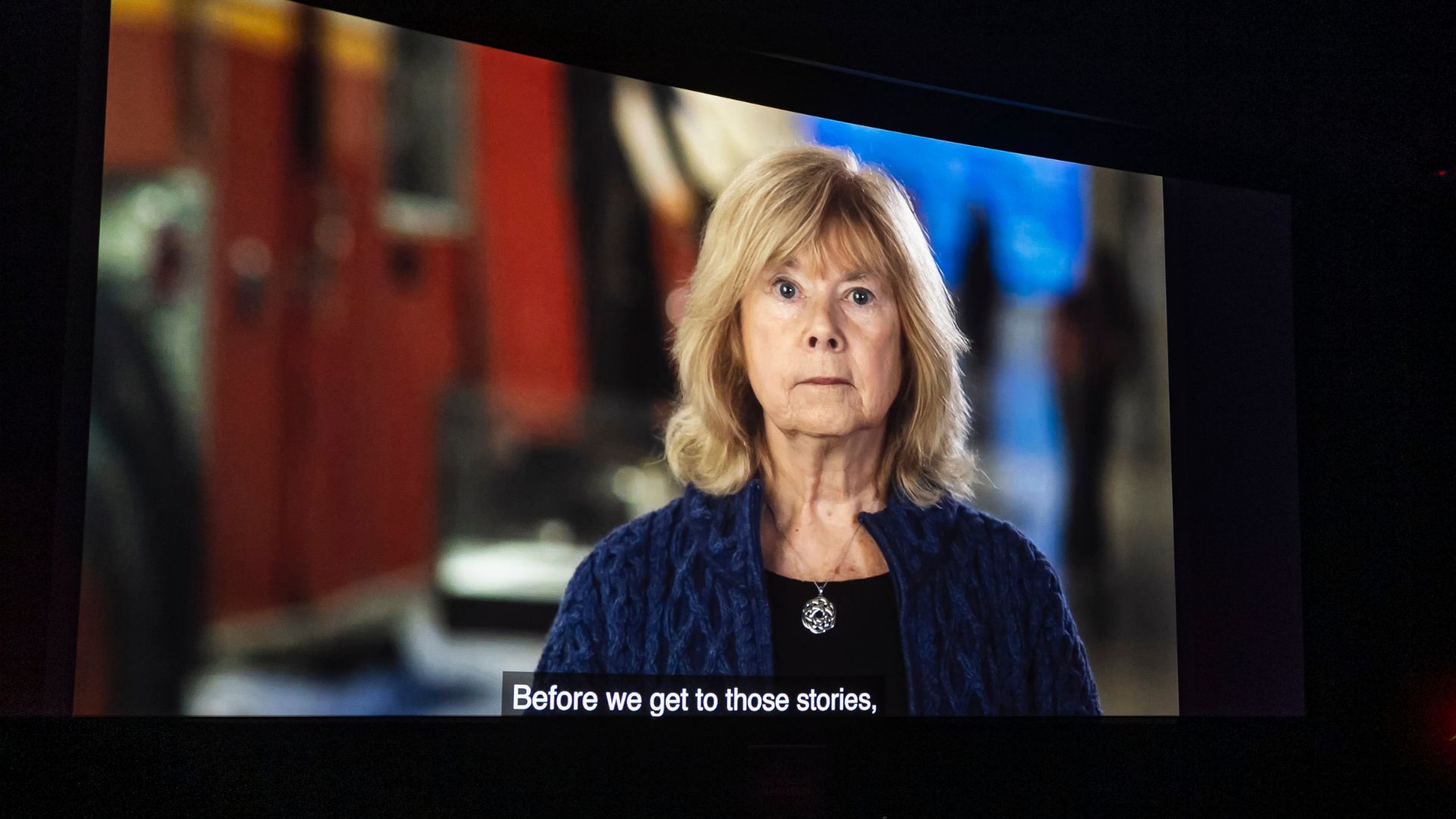
Each September 11, our free 9/11 Anniversary Digital Learning Experience (formerly Anniversary in the Schools) welcomes students and teachers from around the globe for a special program that features a 30-minute film, available on demand, highlighting first-person accounts of the attacks and their aftermath. A live chat with Museum staff is available throughout the day. Past speakers from the 9/11 rescue and recovery community include Sonia Agron, Red Cross volunteer at Ground Zero after 9/11; Bridget Gormley, health advocate whose father, an FDNY firefighter, responded to the attacks and later died from 9/11-related cancer; Dr. Kerry Kelly and Daniel Jost, FDNY Chief Medical Officer on 9/11 and for more than two decades after the attacks, and her husband, a New York City school teacher who was in the classroom with students the morning of the attacks; and Lila Nordstrom, health advocate, a student at Stuyvesant High School on 9/11.
Public Programs
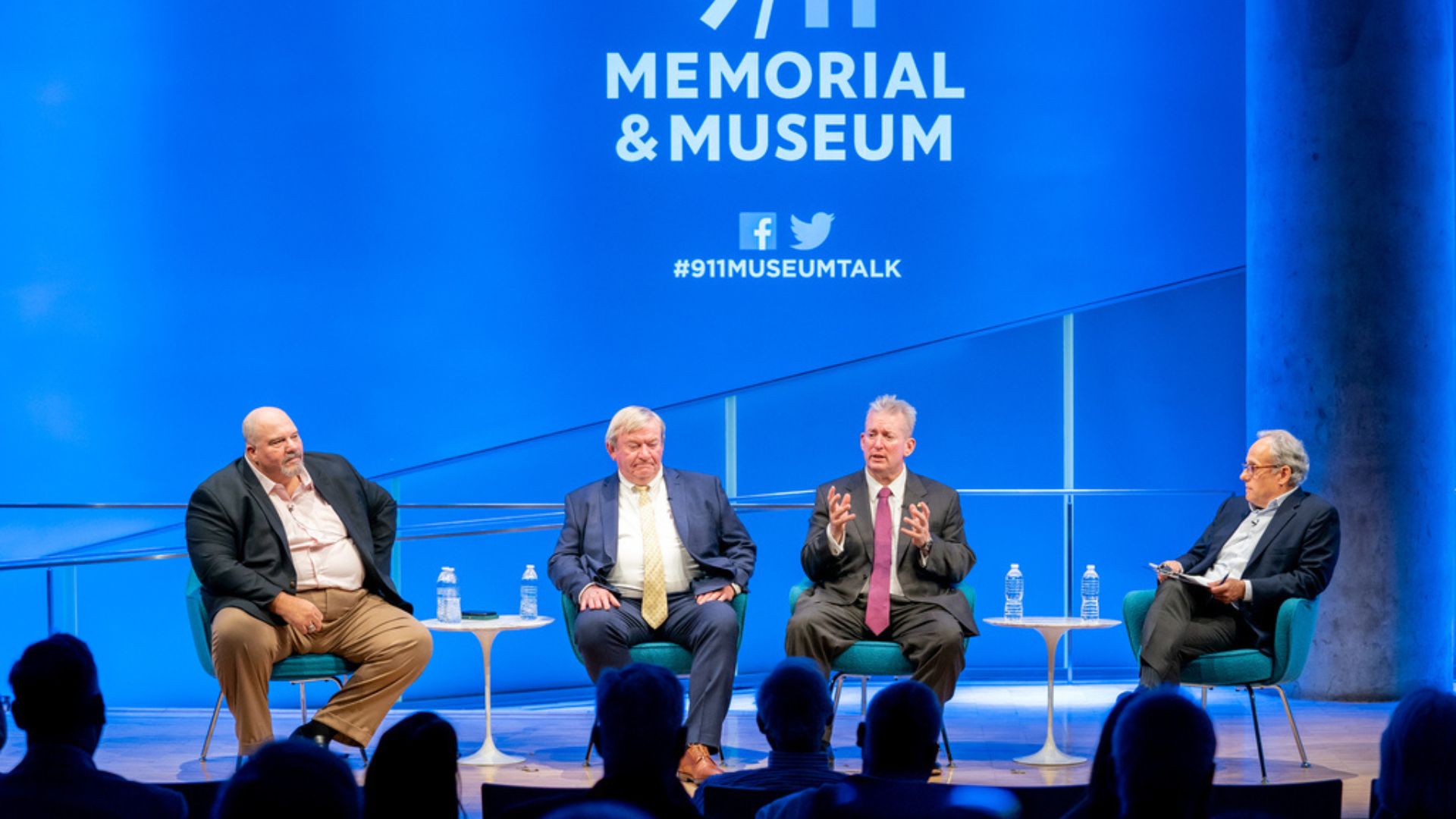
The 9/11 Memorial & Museum’s public program series explores a range of topics covering the ongoing impacts and resonance of the attacks, including the rescue and recovery efforts that led to thousands of 9/11-related deaths and illnesses. Explore sessions dedicated to Fresh Kills; 20 Years Later: Advocacy & Activism; 20 Years: Confronting Challenges; and Rescue & Recovery.
In Their Own Voices
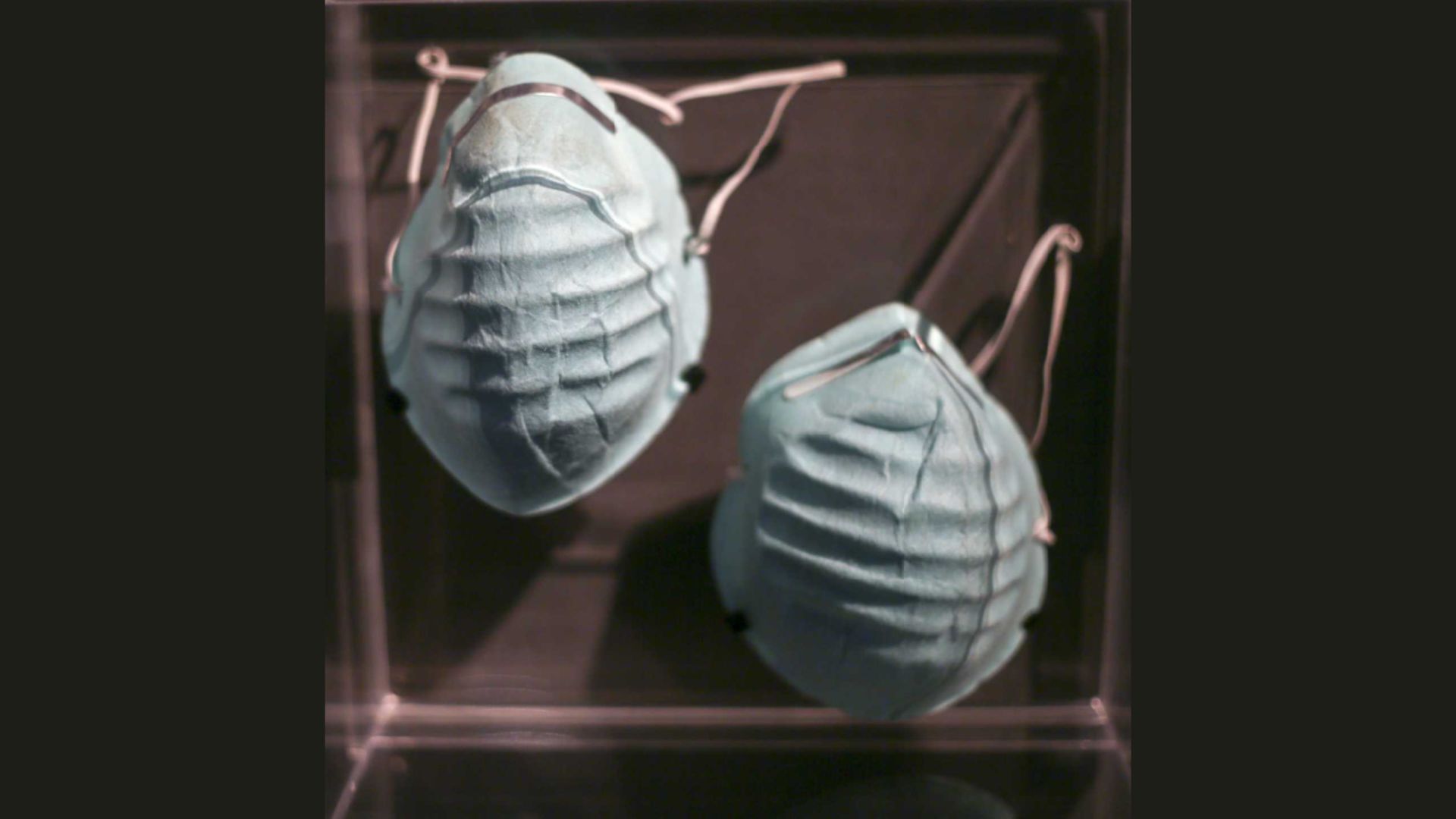
Our blog series "In Their Own Voices" features excerpts of interviews with members of the rescue and recovery community, underscoring the diversity of the agencies, individuals, roles, and long-term implications of the 9/11 story. Explore them here.
Community Member Visitation
We are pleased to offer complimentary Museum admission to the 9/11 community, including the family members of those killed on September 11, 2001 and February 26, 1993; individuals eligible for the World Trade Center Health Program; the immediate family members of those who have died from 9/11-related illnesses and injuries. Plan your visit.
